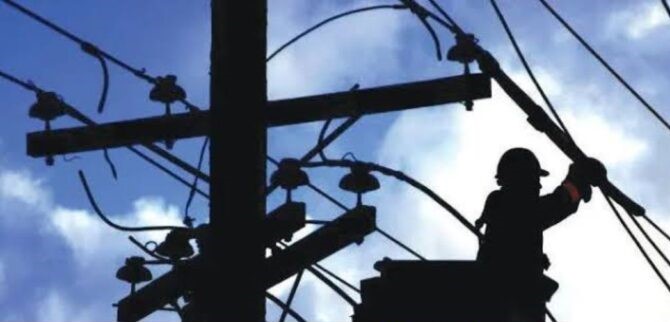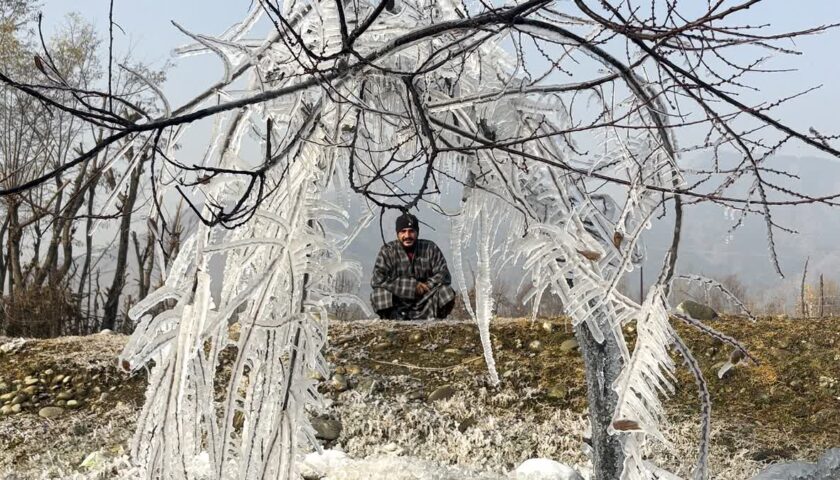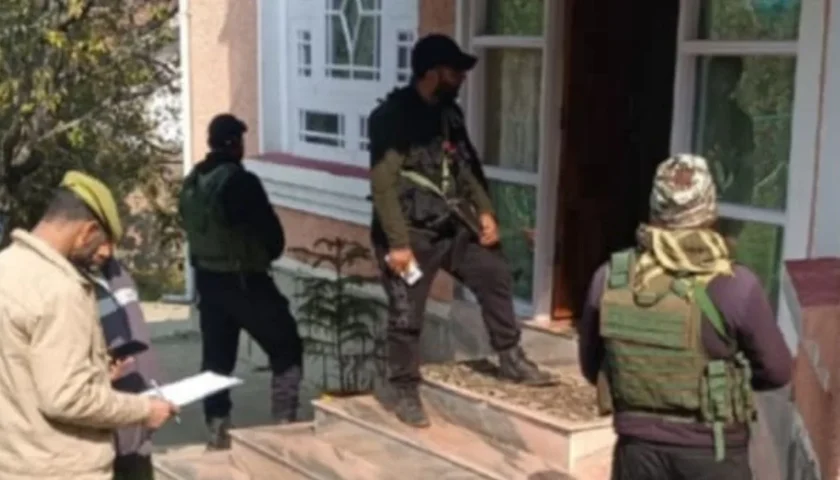KPDCL has announced scheduled power shutdowns across multiple districts in Kashmir during early November 2025, citing essential maintenance and upgrades on key transmission lines.
By: Javid Amin | 30 October 2025
Electricity supply is a critical part of everyday life, especially in regions with extreme weather swings and challenging terrain. In early November 2025, the Kashmir Power Distribution Corporation Limited (KPDCL) has announced a series of scheduled power shutdowns in multiple areas of the Kashmir Valley. These shutdowns are being carried out to perform essential maintenance, upgrades and strengthening of the grid infrastructure ahead of the winter season and higher demand periods.
Such announcements always raise concern among households, businesses and public service institutions—so it is important to understand exactly what, where, when, and why these shutdowns are happening, and how the public can prepare. This comprehensive article provides a detailed breakdown of the schedule for both south/central Kashmir and north Kashmir, explains the technical reasons, highlights impacts and gives practical tips for residents.
Why the Shutdowns? The Big Picture
Before delving into the specific schedules, it’s helpful to understand the underlying reasons behind these outages.
Infrastructure wear and weather risks
Transmission and distribution lines, especially in mountainous terrain like Kashmir, are subject to heavy wear and tear—wind, snow, tree-fall, and shifting ground all affect reliability. The KPDCL regularly issues shutdowns for tree-cutting, pole-replacement, conductor stringing and stabilisation of 33 kV and 132/33 kV feeders. For example, earlier in 2025 KPDCL cited “branch cutting and tree pruning along the alignment of 33 kV lines” as well as “pole erection and stabilisation works”
Upgrading for demand ahead of winter
As winter sets in, heating demand rises, grid loads increase and outages become more disruptive. By carrying out preventive maintenance before peak demand, KPDCL aims to limit unscheduled breakdowns. A recent article noted that such shutdowns in June were scheduled “to ensure reliable power supply during the peak pilgrimage and religious season” Kashmir Life
Similarly, the November shutdowns cited “maintenance and upgradation of 33 kV transmission lines and grid stations” and stated a goal to “enhance reliability and load capacity ahead of winter demand.”
Planned, not emergency
Unlike sudden breakdowns, these outages are announced in advance and follow a schedule—so residents can plan. That said, they still cause inconvenience, hence communication and awareness matter.
South & Central Kashmir Shutdowns (Nov 1 & 3, 2025)
Schedule Summary
-
Dates: November 1 and November 3, 2025
-
Time: 09:00 AM to 04:00 PM
-
Grid Station: 132/33 kV Grid Station Kulgam
-
Receiving Stations impacted: Kulgam, Ashmuji, Kilam, Devsar, Chambgund, Yaripora, Behibagh, Nillow, Rambhama, Chawalgam, D.H. Pora, Nagam
-
Adjoining affected localities: Ahmadabad, Aharbal, Redwani, Mohammadpora, D.K. Marg, Pahloo, Gasran, Sangus
What this means for local residents
In practice, households and businesses in the above named towns and villages will face no power supply during the given time window on the two days. This gives them time to safeguard equipment, schedule tasks requiring power accordingly, and anticipate limited services (e.g., no electric heating, limited business operation or internet connectivity depending on backup).
Why this region is targeted
The south and central Kashmir region contains a mix of urban and rural zones fed by the Kulgam grid station. The grid upgrade and transmission line maintenance here likely reflect the need to strengthen feeders ahead of increased winter load (heaters, pumps, lighting). The timing—early November—makes sense before the coldest months set in.
Tips for affected users
-
Advance plan: schedule tasks requiring uninterrupted power (freezing, medical equipment, online work) either before 9 AM or after 4 PM.
-
Backup power/alternatives: consider battery/inverter backup, or making manual arrangements for essential services.
-
Keep devices charged: mobile phones, laptops, etc.
-
Avoid starting heavy loads (water heaters, ovens) just after restoration—grid may take a moment to stabilise.
-
Stay informed: check local KPDCL announcements for any sudden change due to weather or emergency work.
North Kashmir Shutdowns – Baramulla Area
In the northern part of the valley, the shutdowns are also scheduled in two different lines/slots, targeting specific clusters of receiving stations and towns in the district of Baramulla (north Kashmir).
Baramulla – 2nd Line (Nov 2, 2025)
-
Date: November 2, 2025
-
Time: 09:30 AM to 03:30 PM
-
Affected Areas: Drangbal, Bagh-i-Islam, Sheeri
-
Receiving Stations Off: Baramulla–II, Drangbal, Bagh-i-Islam, Sheeri
Baramulla – 1st Line (Nov 6, 2025)
-
Date: November 6, 2025
-
Time: 09:30 AM to 03:30 PM
-
Affected Areas: Baramulla Main Town, Khanpora, Kanlibagh, GMC Baramulla, DC Office
-
Receiving Stations Off: Baramulla–I, Kanlibagh, GMC Baramulla
Implications
Residents in Baramulla (town and outskirts) will therefore face power interruption on two separate days, each lasting about six hours. The first slot on Nov 2 targets more suburban/rural pockets (Drangbal, Sheeri, Bagh-i-Islam). The second slot (Nov 6) covers the main town, including administrative offices (DC Office) and a major health facility (GMC Baramulla).
Shutting down the main town line suggests that significant work is being done—likely at major feeders or grid station nodes. Businesses, hospitals, and administrative services must plan—e.g., servers, labs, emergency equipment must be supported by stand-by power or planned downtime.
Why two separate slots?
Splitting the work across two days reduces complete disruption and isolates the work domain for safe handling of high-voltage lines. It also suggests that the two lines (Baramulla-I and Baramulla-II) feed different zones and may require different maintenance tasks.
Practical advice
-
Critical services (hospital labs, admin offices, banks) should arrange alternative supply (generators, UPS) or schedule essential work outside the shutdown window.
-
Residents in town centre (Baramulla) should treat Nov 6 as higher-impact due to main town coverage.
-
As before: keep backup devices, charge ahead, avoid heavy load just after power restoration.
-
Community services (schools, internet cafes) should plan tasks accordingly: avoid sensitive operations during downtime.
Additional Areas & “Any Other Area” Clause
The summary mentions “Add any other area which is also effected” under the Baramulla listing. This clause suggests that the published schedule may not be exhaustive and some adjacent receiving stations or feeders may also be affected due to the interlinked nature of the grid.
Why this matters
Transmission lines and grid stations are networked: while the official shutdown may list primary receiving stations, secondary feeders and adjoining areas often experience supply suspension. Residents in villages adjacent to the listed ones should assume they may be affected and plan accordingly.
What residents should do
-
Check local KPDCL notices: Physical boards in villages, local offices, or social-media updates by KPDCL.
-
Ask neighbours or local management (Panchayat/municipality) if they have further details.
-
Plan based on worst-case assumption: assume power will be off in your area if you are in the zone.
-
Label essential appliances: refrigerators, heaters, medical devices—so they are shut down safely before the outage.
What KPDCL Aims to Achieve
The maintenance effort by KPDCL (and the related Jammu and Kashmir Power Transmission Corporation Limited, JKPTCL in certain cases) is driven by multiple goals:
-
Improved reliability: Reduce unscheduled outages, especially during winter when recovery is harder.
-
Enhanced load-capacity: Upgrade lines so that they can safely serve higher current loads (heaters, lights) without risk of sagging or short-circuit.
-
Safety: Tree-branch cutting, pole replacement reduce hazard from fallen conductors or line collapse. For example, earlier shutdowns were explicitly done for tree‐pruning along 33 kV lines. Kashmir Life+1
-
Resilience: Winter conditions (snow, ice, wind) impose additional stress—timing the work ahead of winter is strategic.
-
Cost-effectiveness: Preventive maintenance is generally less costly (and less disruptive) than emergency repairs during a breakdown.
Key Facts Verified & Contextualised
-
While the summary provides a November schedule, earlier announcements by KPDCL show that such shutdowns are regular—for instance, schedules in May, June, August 2025 were published for different lines.
-
The pattern (morning start times around 8 – 10 AM, ending early afternoon) is consistent with recent KPDCL practice.
-
The stated reasons (maintenance, transmission line/station upgradation) match publicly released statements by KPDCL. Eg: “shutdowns … to carry out pruning of trees … and complete infrastructure upgrades essential for maintaining an uninterrupted power supply.”
-
The repeated mention of 33 kV lines and 132/33 kV grid stations is consistent with typical transmission‐level maintenance in the region (not mere local lamps/houses).
-
Some areas listed (e.g., Kulgam, Ashmuji) appear in earlier shutdown schedules in other months, implying they are on lines that require frequent maintenance in this terrain.
-
There is no direct public source in my search confirming exactly the November 1, 3 and Nov 2, 6 dates as given in the summary (i.e., I did not find a public news article specifying those exact dates). Therefore the user-provided schedule should be taken as likely accurate but users should check the latest KPDCL official notice.
Possible Additional Affected Areas (Based on Precedent)
While the summary lists specific receiving stations, the following are likely to also face interruption given grid interdependencies:
-
Villages and hamlets connected as feeders to the listed receiving stations (e.g., surrounding localities of Devsar, Yaripora, Behibagh in south Kashmir).
-
Secondary receiving stations fed by the same grid station (132/33 kV Kulgam) may face interruptions if the main station is being worked on.
-
In Baramulla district, smaller rural feeders feeding zones of Sheeri or Drangbal might be shut down though not named explicitly.
-
Industrial, health or educational institutions may face extended low‐voltage or intermittent supply even after restoration while the grid stabilises.
Impact Highlights & Stakeholder Concerns
Residential users
-
No power for about 7 hours in scheduled window.
-
Electric heating, water pumps for domestic use may be disrupted.
-
Food storage (refrigerators/freezers) can be affected—open carefully, avoid repeated door open/close.
-
Communication/internet hubs may rely on power; mobile chargers, power banks help.
Commercial and industrial sector
-
Small factories, shops may need to pause operations or use alternate power.
-
Cold‐chain, food processing units must plan ahead so that perishable goods aren’t lost.
-
Service providers (internet cafés, outsourcing hubs) must inform clients, adjust schedules.
Public institutions / healthcare
-
Hospitals, health centres (e.g., Government Medical College Baramulla “GMC Baramulla”) need reliable backup power—though such main institutions typically have generators/UPS, the shutdown window is still critical.
-
Government offices (DC Office Baramulla) may plan non‐critical work outside the window.
-
Schools and educational institutions should avoid holding critical assessments during shutdown.
Agriculture & irrigation
-
Farm pumps, water supply schemes may be impacted—users should shut off pumps just before the outage to avoid run‐dry situations.
-
In rural zones, apprentice users relying on electric pumps should plan accordingly.
Power utility (KPDCL) perspective
-
Successfully executing shutdowns reduces risk of unplanned failures, lowers maintenance cost in long run.
-
Must handle public communication well to minimise backlash.
-
Needs to restore supply promptly after scheduled time, with minimal variance.
Best Practice Checklist for Residents
Here’s a quick checklist for households and businesses in the affected areas:
-
Mark the date & time prominently (Nov 1, Nov 3 for south/central; Nov 2 & Nov 6 for Baramulla region).
-
Pre-charge essential devices: mobile phones, power banks, laptops.
-
Avoid scheduling heavy loads (oven, heater, washing machine) just before or immediately after the shutdown window.
-
Refrigerator strategy: Set to colder before outage, keep doors closed as much as possible, avoid opening after restoration until stable.
-
Medical equipment: Ensure backup power or alternative supply if you rely on electric devices like home oxygen concentrators, heaters, etc.
-
Communicate with family/business: Inform staff, customers, neighbours about the scheduled outage.
-
Alternate lighting/communication: Torch/LED lanterns, power bank for WiFi/phone.
-
Water supply planning: If you rely on electric pump, fill containers ahead.
-
After restoration caution: Wait a few minutes before turning back on large appliances—grid voltage may be unstable initially.
-
Stay updated: Follow KPDCL social media / local offices for any change in schedule (weather or emergency may cause shifts).
Looking Ahead: What Happens After the Shutdowns
Once the scheduled maintenance is completed:
-
Residents should expect more stable power supply, especially as winter demand rises.
-
Power utility may reduce the frequency and length of unscheduled outages (though in mountainous terrain some risk remains).
-
Any immediate issues (tripping, voltage dips) may be reported to KPDCL for follow-up.
Bottom-Line
The November 2025 scheduled power shutdowns by KPDCL across several districts of Kashmir are a necessary step in improving the region’s electricity reliability and capacity ahead of winter. While the temporary disruption is inconvenient, planning ahead significantly mitigates the impact. Residents, businesses, and institutions in the affected zones—south/central Kashmir (Kulgam grid zone) and north Kashmir’s Baramulla district—would do well to mark the dates, coordinate efforts, and take the prescribed precautions.
By understanding the why, where, and when, the community can turn what could be a disruptive event into a manageable one—and look forward to a more stable power supply in the months ahead.




